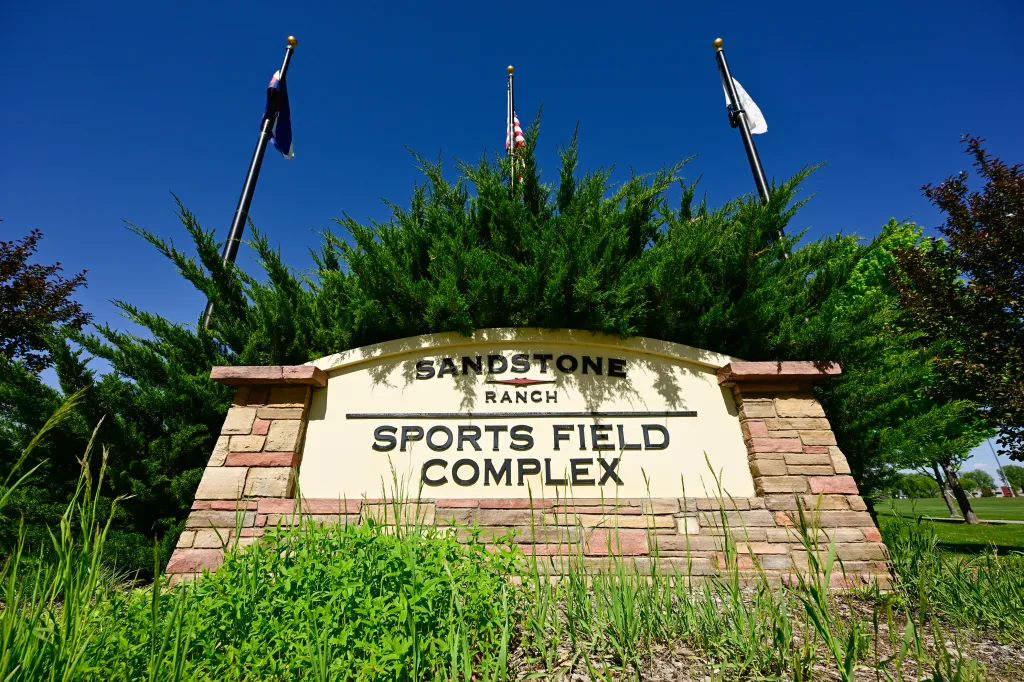
Longmont’s Sandstone Ranch Community Park could receive a major expansion, with four new ball fields, restrooms, shelters and parking, all included in the city’s proposed 2026 budget.
Stephanie Cooper, Longmont’s manager of parks and trails development, told council members at Tuesday night’s study session that the project would complete the park’s original vision while meeting the growing demand for youth sports. “Sandstone Ranch is one of Longmont’s most iconic and heavily used community parks,” she said, adding that additional facilities will ease pressure on heavily used fields across the city.
The existing fourplex of ball fields at Sandstone Ranch was built nearly 20 years ago.
The project is slated to use a best-value design-build approach — selecting designs and builders based on quality, not lowest bid — to ensure efficiency and quality, according to Cooper’s presentation. She said the city has had success with that method on recent parks projects and expects the same at Sandstone Ranch. Construction would begin in 2026, with funding included in the $11 million budgeted for parks, recreation and open space projects next year.
City Manager Harold Dominguez emphasized that staff are focused on finishing projects already in motion before adding more and that limiting the number of major initiatives has improved delivery. “It was tough for us to finish anything (in 2025),” Dominguez said, explaining that staff are now tracking project capacity with new dashboards to avoid delays.
Budget Manager Sandra Sifuentes outlined the broader capital program, which totals $93.2 million in 2026 and $357.8 million over the next five years. Transportation projects make up the largest share at $38.4 million, followed by $16.5 million for water and $13.4 million for electric. Smaller allocations are set for drainage, sewer, broadband and downtown redevelopment.
Electric Utility Director Darrell Hahn described Longmont Power and Communications’ priorities, including new community solar installations, small-scale battery projects, and capacity upgrades to connect the city’s six substations. A new maintenance crew is also planned to reduce outages and address a backlog of system rehabilitation work.
“What you want to avoid is an overemphasis in one area,” Hahn said, describing the utility department’s approach as a three-legged stool balancing reliability, sustainability and affordability.
Hahn estimated that about 70% of the city’s electric lines are underground, with undergrounding (the process of relocating utility infrastructure such as power lines from overhead poles to buried cables) progress continuing as new development or infrastructure projects allow.
Beyond capital projects, the budget introduces a Technology Services Fund to consolidate software and IT costs across departments. The $2.2 million fund includes four term-limited positions and Salesforce licensing. Salesforce, according to its website, is a “customer relationship management technology.”
City staff said the change will give a clearer view of technology spending citywide.
The Sanitation Fund budget is set at $11.5 million, a 7.3% decrease from 2025, mainly due to the removal of one-time expenses. Updated revenues and expenses will be brought back early next year to align with sanitation rates approved by council.
During public comment, Longmont resident Scott Starr raised concerns about airport funding, arguing the Vance Brand Airport does not generate enough tax revenue to cover its costs. Airport funding will be discussed in more detail at next week’s session.
With Mayor Joan Peck absent, Mayor Pro Tem Susie Hidalgo-Fahring presided over Tuesday’s study session. The council will continue its budget discussions throughout September, with final adoption expected in October.



